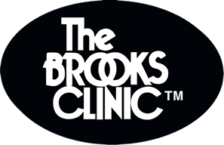Auto accidents can lead to a wide range of injuries, and one of the most common types is fractures, or broken bones. Fractures from auto accidents can occur in various parts of the body due to the impact of the collision. Understanding the different types of injuires that can result from auto accidents is essential for a wholesome recovery. Your Brooks Clinic provider will walk you thru all the steps you need to address to make sure your fracture heals properly
In this article, we will explore the various types of fractures that individuals may experience after an auto accident, ranging from simple to more complex ones involving the spine or joints. Additionally, we will delve into the available treatments that can aid in the healing process and promote a successful recovery. By gaining insights into these injuries and treatments, you can be better equipped to navigate your journey towards regaining mobility, strength, and overall well-being after an auto accident.
Types Of Fractures
- Closed: This is a common type of fracture where the bone breaks but does not pierce through the skin. It can happen in various areas of the body, such as the arms, legs, ribs, or pelvis. Closed fractures may result from the forceful impact of an auto accident.
- Open: Unlike closed fractures, open fractures involve a break in the bone that pierces through the skin, leading to an external wound. These fractures can be particularly severe and are more prone to infections due to the exposure of the bone to the external environment.
- Compression: Compression fractures often occur in the vertebrae of the spine due to the sudden impact of an auto accident. They happen when the vertebrae are compressed or crushed, causing pain, limited mobility, and potential spinal deformities.
- Greenstick: Common in children, greenstick fractures occur when the bone bends and cracks but does not fully break. The bone may appear partially fractured, resembling the way a green twig bends but doesn’t snap in half.
- Displaced: In a displaced fracture, the broken ends of the bone move out of alignment. This type of fracture can be caused by the significant force generated during an auto accident, resulting in bones that no longer align properly.
- Stress: Stress fractures are hairline cracks that develop over time due to repeated stress or overuse. However, they can also occur in auto accidents where the body experiences sudden trauma. These fractures are common in areas such as the feet, ankles, or shins.
The severity and specific types of fractures can vary based on the nature of the accident and the impact force involved. It is vital to seek immediate medical attention if you suspect a bone has been compromised after an auto accident. Only a qualified healthcare professional can provide an accurate diagnosis and recommend the appropriate treatment for a wholesome recovery.
Treatments For Fractures
- Immobilization: Immobilization is a common initial treatment for fractures. It involves stabilizing the broken bone to prevent further damage and promote healing. This can be done through the use of casts, splints, or braces, depending on the location and severity of the fracture. Immobilization helps keep the bones in proper alignment, reducing pain and allowing the fractured bone to mend.
- Reduction: Reduction is a procedure performed to realign displaced fractures. There are two types: closed reduction and open reduction. Closed reduction involves manipulating the bones back into their proper position without surgical intervention. Open reduction, on the other hand, may require a surgical procedure to reposition the bones accurately. Reduction helps restore the bone’s alignment, facilitating healing and minimizing long-term complications.
- Surgery: In some cases, fractures may require surgical intervention. This is particularly true for complex fractures, open fractures, or fractures involving joint surfaces. Surgery may involve the use of plates, screws, rods, or wires to stabilize the fractured bone and promote proper healing. Surgical treatment aims to restore bone alignment, reduce pain, and improve functionality.
Conclusion
In conclusion, fractures resulting from auto accidents can vary in type and severity, ranging from closed to open, compression to stress. It is crucial to seek immediate medical attention if you suspect any fractures after an auto accident, as prompt diagnosis and appropriate treatment are vital for a wholesome recovery. Treatment options may include immobilization, reduction, surgery, rehabilitation, and medication, depending on the specific fracture and its characteristics.
At The Brooks Clinic, our dedicated team of healthcare professionals is experienced in treating injuries resulting from auto accidents. We are committed to providing comprehensive care, personalized treatment plans, and ongoing support to ensure a successful recovery and restore your quality of life. Remember, seeking timely medical attention and following the recommended treatment plan are essential steps towards regaining optimal health and well-being after a fracture.




